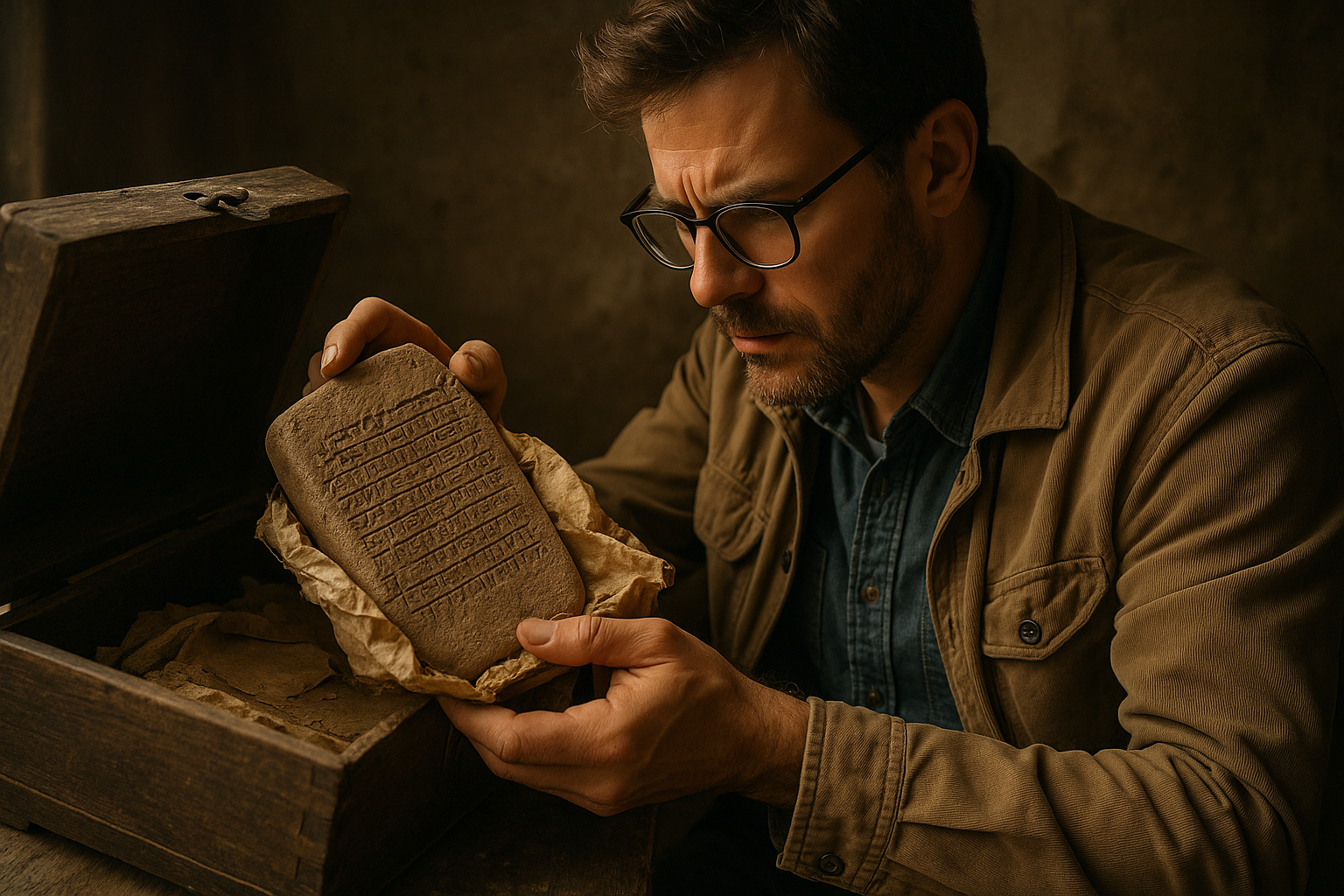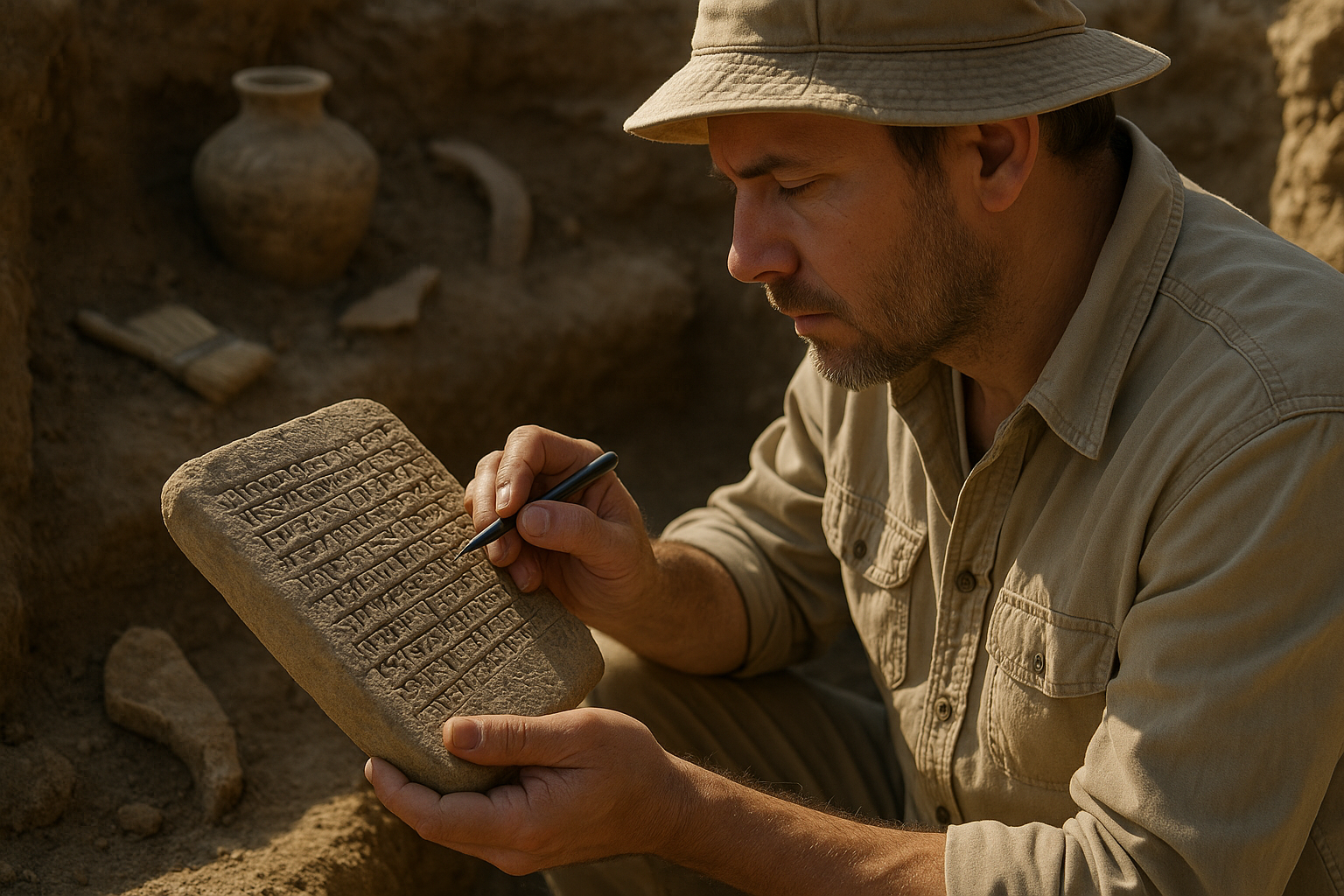Archaeologists worldwide continue to unlock humanity’s past through artifacts, inscriptions, and structures that carry messages across millennia, revealing civilizations long forgotten.
🔍 The Language of Stones and Bones
Ancient civilizations possessed sophisticated methods of preserving information for future generations, often embedding critical knowledge within physical objects, architectural designs, and written records. These time-bound messages served multiple purposes: recording historical events, transmitting religious doctrines, establishing legal frameworks, and preserving scientific knowledge. Understanding these communications requires interdisciplinary approaches combining archaeology, linguistics, chemistry, and digital technology.
The challenge facing modern researchers extends beyond simple translation. Many ancient messages were intentionally obscured, encoded in symbolic language understood only by initiated members of society. Others deteriorated over time, leaving fragments that archaeologists must painstakingly reconstruct. Some messages were never intended to be permanent records but became preserved through fortunate environmental conditions.
Deciphering Written Records: From Cuneiform to Hieroglyphs
The decipherment of ancient writing systems represents one of archaeology’s greatest triumphs. The Rosetta Stone, discovered in 1799, provided the breakthrough needed to understand Egyptian hieroglyphs by presenting the same text in three scripts: hieroglyphic, demotic, and ancient Greek. Jean-François Champollion’s successful decoding in 1822 opened an entire civilization’s written legacy to modern understanding.
Cuneiform script, developed by the Sumerians around 3400 BCE, presented different challenges. This wedge-shaped writing impressed into clay tablets survived remarkably well in archaeological contexts. The decipherment process, pioneered by Georg Friedrich Grotefend and Henry Rawlinson in the 19th century, revealed administrative records, literary works, mathematical texts, and astronomical observations that fundamentally changed our understanding of Mesopotamian culture.
Linear B, the writing system of Mycenaean Greek civilization, remained mysterious until Michael Ventris cracked the code in 1952. His breakthrough demonstrated that systematic analysis combined with linguistic knowledge could unlock even the most resistant ancient scripts. The tablets revealed economic records, religious practices, and social organization of Bronze Age Greece.
Undeciphered Scripts: Ongoing Mysteries 📜
Several ancient writing systems continue to resist decipherment despite intensive scholarly effort. The Indus Valley script, used between approximately 2600 and 1900 BCE, appears on thousands of seals and tablets but remains incomprehensible. Researchers debate whether it represents a true writing system or a collection of symbolic markers. The absence of bilingual texts similar to the Rosetta Stone complicates efforts.
Rongorongo, the enigmatic script of Easter Island, presents another enduring puzzle. The wooden tablets bearing these glyphs number fewer than thirty, providing limited material for analysis. Whether Rongorongo represents actual language or ritual symbols remains contentious among researchers. The cultural context of Rapa Nui civilization adds layers of complexity to interpretation efforts.
Archaeological Dating Techniques: Establishing Temporal Context
Accurately dating archaeological materials forms the foundation of understanding time-bound messages. Without reliable chronology, determining when messages were created and their historical context becomes impossible. Multiple dating techniques have revolutionized archaeological science, each with specific applications and limitations.
Radiocarbon dating, developed by Willard Libby in the 1940s, measures the decay of carbon-14 isotopes in organic materials. This technique reliably dates objects up to approximately 50,000 years old, making it invaluable for understanding prehistoric and ancient historical periods. Recent refinements using accelerator mass spectrometry require minimal sample sizes, preserving precious artifacts while obtaining accurate dates.
Dendrochronology, or tree-ring dating, provides exceptional precision for wooden artifacts and structures. By matching patterns of growth rings to established chronologies, researchers can date materials to specific years. This technique has proven particularly valuable in dating ancient buildings, shipwrecks, and wooden objects across various cultures.
Advanced Scientific Methods ⚛️
Thermoluminescence dating measures trapped electrons in crystalline materials like pottery and burned stones. When artifacts were last heated, their electron clocks reset to zero. By measuring accumulated radiation damage since that heating event, scientists determine when pottery was fired or stones were heated in ancient hearths.
Optically stimulated luminescence extends similar principles to sediments, dating when materials were last exposed to sunlight. This technique proves particularly useful for dating archaeological layers and understanding site formation processes. Combined with other methods, OSL dating helps establish comprehensive chronological frameworks.
Architectural Messages: Buildings as Communication
Ancient architects embedded messages within structural designs, astronomical alignments, and decorative programs. These messages conveyed religious cosmologies, political authority, astronomical knowledge, and cultural values. Understanding architectural communication requires examining both physical structures and their cultural contexts.
The pyramids of Giza demonstrate sophisticated astronomical knowledge and mathematical precision. Their cardinal alignments, dimensional ratios, and relationship to celestial bodies encoded Egyptian cosmological beliefs. Recent research using advanced scanning technology reveals hidden chambers and structural features that continue yielding new insights into pyramid construction and symbolic meaning.
Angkor Wat in Cambodia represents Hindu and Buddhist cosmology through architectural form. The temple’s layout mirrors Mount Meru, the cosmic mountain of Hindu mythology, while bas-reliefs depict mythological narratives and historical events. The complex’s astronomical alignments mark significant calendrical events, demonstrating advanced astronomical observation.
Megalithic Monuments and Celestial Knowledge 🌟
Stonehenge exemplifies prehistoric astronomical observation and social organization. The monument’s alignments with solstice sunrises and sunsets demonstrate sophisticated understanding of celestial cycles. Recent excavations reveal Stonehenge as the center of a larger ceremonial landscape, suggesting complex ritual practices and social hierarchies.
Newgrange in Ireland, predating Stonehenge and the Egyptian pyramids, features a passage aligned with the winter solstice sunrise. Light penetrates the chamber only during this brief annual period, creating dramatic illumination of the inner sanctuary. This precise engineering demonstrates Neolithic peoples’ astronomical knowledge and their ability to encode it architecturally.
Material Culture: Objects as Information Carriers
Everyday objects carried messages about identity, status, religious affiliation, and cultural practices. Archaeological analysis of material culture reveals information about ancient technologies, trade networks, social structures, and belief systems. Understanding these messages requires examining manufacturing techniques, decorative choices, functional designs, and contextual associations.
Pottery serves as one of archaeology’s most informative artifact categories. Ceramic vessels reveal technological capabilities, artistic preferences, dietary practices, and cultural connections. Changes in pottery styles help archaeologists track population movements, cultural interactions, and chronological developments. Residue analysis of pottery interiors identifies consumed foods and beverages, providing direct evidence of ancient diets.
Metalwork demonstrates technological sophistication and social complexity. Bronze and iron production required specialized knowledge, organized labor, and resource access. Prestige metal objects marked social status and political authority. The distribution of metal artifacts reveals trade networks spanning continents, connecting distant cultures through commerce and exchange.
Personal Adornments and Identity Markers 💍
Jewelry, clothing accessories, and body modifications communicated personal and group identities. Archaeological evidence from burials reveals how individuals expressed gender, age, social status, and cultural affiliation through adornment choices. Isotope analysis of human remains combined with artifact associations traces individual life histories, including geographic origins and dietary patterns.
Tattoos preserved on naturally mummified remains provide direct evidence of ancient body modification practices. The Iceman, a 5,300-year-old naturally preserved body discovered in the Alps, bears therapeutic tattoos marking painful joint locations. Egyptian and Nubian mummies display elaborate tattoos with probable religious or protective significance.
Digital Revolution in Archaeological Analysis
Twenty-first century technology transforms how archaeologists discover, document, and interpret ancient messages. Remote sensing, three-dimensional modeling, artificial intelligence, and big data analysis enable research impossible for previous generations. These technologies accelerate discovery while enabling non-destructive investigation of fragile materials.
LiDAR (Light Detection and Ranging) technology revolutionizes landscape archaeology by revealing hidden structures beneath forest canopies and vegetation. Surveys in Central America uncovered vast Maya cities previously unknown, fundamentally revising understanding of Maya civilization’s scale and complexity. Similar applications across Southeast Asia, Europe, and other regions continue revealing archaeological landscapes invisible to traditional survey methods.
Ground-penetrating radar and magnetometry detect subsurface features without excavation. These non-invasive techniques identify buried structures, graves, and artifact concentrations, guiding targeted excavation and preserving archaeological resources. Integration of multiple sensing technologies creates comprehensive site maps before disturbing archaeological deposits.
Artificial Intelligence and Pattern Recognition 🤖
Machine learning algorithms assist in analyzing vast datasets, identifying patterns humans might miss. AI applications include pottery classification, script analysis, predictive modeling of site locations, and reconstruction of fragmented artifacts. Neural networks trained on known scripts assist in deciphering unknown writing systems by identifying structural patterns and likely meanings.
Three-dimensional scanning and printing enable detailed artifact documentation, virtual reconstruction of damaged objects, and creation of research replicas. Museums worldwide digitize collections, making artifacts accessible to global researchers and the public. Virtual reality applications allow immersive exploration of archaeological sites and reconstructed ancient environments.
Environmental Archives: Nature’s Record Keeping
Natural materials preserve environmental information spanning millennia. Ice cores, tree rings, lake sediments, and pollen deposits archive climate data, vegetation changes, and human environmental impacts. Integrating environmental and archaeological evidence reveals how ancient peoples responded to climate variations, natural disasters, and resource availability.
Pollen analysis reconstructs past vegetation communities and agricultural practices. Ancient peoples’ farming activities altered regional vegetation patterns, creating signatures detectable in sediment cores. These records document agricultural origins, crop introductions, deforestation, and abandonment of cultivated landscapes.
Ice cores from Greenland and Antarctica contain trapped atmospheric gases, volcanic ash, and industrial pollutants, creating chronological records extending hundreds of thousands of years. These archives reveal that ancient civilizations’ metal smelting activities produced detectable atmospheric lead pollution, documenting industrial-scale production.
Isotope Analysis: Chemical Messages 🧪
Stable isotope analysis of human and animal remains reveals diet, geographic origins, and migration patterns. Carbon and nitrogen isotopes distinguish between marine and terrestrial diets, C3 and C4 plant consumption, and trophic levels. Oxygen and strontium isotopes in tooth enamel identify childhood geographic locations, tracking individual mobility across lifetimes.
DNA analysis revolutionizes understanding of ancient populations, revealing genetic relationships, population movements, and disease histories. Ancient DNA extracted from skeletal remains traces human migrations across continents, documenting intermixing between archaic and modern human populations. Pathogen DNA identifies diseases affecting ancient peoples, including plague, tuberculosis, and leprosy.
Preserving Messages for Future Discovery
Archaeological preservation ensures ancient messages remain available for future research. Deteriorating sites, looting, development pressures, and climate change threaten irreplaceable cultural heritage. International cooperation, legal protections, community engagement, and advanced conservation techniques work to safeguard archaeological resources.
Digital documentation creates permanent records of threatened sites and artifacts. High-resolution photography, photogrammetry, and laser scanning preserve detailed information even when physical sites face destruction. International databases archive this documentation, ensuring research continues even after sites’ physical loss.
Community archaeology engages local populations in heritage preservation and research. Indigenous communities increasingly lead archaeological projects investigating their ancestral heritage, bringing traditional knowledge to interpretation of archaeological evidence. Collaborative approaches respect cultural sensitivities while advancing scientific understanding.
Interpreting Messages: Challenges and Controversies 🔬
Archaeological interpretation remains inherently subjective, influenced by researchers’ cultural backgrounds, theoretical frameworks, and available evidence. Multiple interpretations often coexist for the same evidence, with scholarly debate driving refined understanding. Acknowledging interpretive limitations while pursuing rigorous methodologies ensures archaeological conclusions remain grounded in evidence.
Pseudoarchaeology promotes unfounded claims about ancient civilizations, often attributing monuments to lost advanced societies or extraterrestrial intervention. These narratives disrespect ancient peoples’ capabilities while misrepresenting archaeological evidence. Professional archaeologists combat misinformation through public education, media engagement, and accessible scholarly communication.
Repatriation debates address ownership and control of archaeological materials and human remains. Indigenous communities increasingly reclaim ancestral remains and sacred objects held by museums and institutions. Ethical archaeology recognizes descendant communities’ rights while seeking collaborative approaches balancing research, education, and cultural respect.

Future Horizons: Emerging Technologies and Questions
Archaeological science continues evolving, with emerging technologies promising new insights into ancient messages. Quantum sensing, advanced genomics, proteomics, and ever-more-sophisticated computational analysis will reveal information currently inaccessible. Future archaeologists will answer questions we cannot yet formulate, using tools we cannot yet imagine.
Space archaeology applies remote sensing to identify archaeological sites from orbital platforms. Satellite imagery detects subtle surface variations indicating buried structures, tracks looting activities, and monitors site conditions. As resolution improves and analytical techniques advance, space-based archaeology will become increasingly important for site discovery and preservation monitoring.
The messages ancient peoples embedded in material culture, architecture, written records, and landscape modifications continue speaking across millennia. Each archaeological discovery adds pieces to humanity’s collective story, revealing our species’ creativity, adaptability, and enduring desire to communicate across time’s vast expanses. Understanding these messages requires dedication, innovation, and respect for the peoples whose lives created the archaeological record we study today.
As technology advances and methodologies improve, previously silent artifacts find their voices. The ongoing dialogue between past and present enriches our understanding of human experience, demonstrating that while civilizations rise and fall, the human impulse to leave marks for posterity remains constant. These time-bound messages remind us that we too are creating archaeological deposits future generations will excavate, interpret, and wonder about, continuing humanity’s eternal conversation across the ages.
Toni Santos is a temporal researcher and symbolic archaeologist specializing in the study of forgotten burial systems, sacred archival practices, and the visual languages embedded in ancient temporal lore. Through an interdisciplinary and artifact-focused lens, Toni investigates how humanity has encoded knowledge, memory, and mystery into the temporal world — across cultures, rituals, and vanished civilizations. His work is grounded in a fascination with time capsules not only as vessels, but as carriers of hidden meaning. From extinct burial ritual practices to mythical codices and secret temporal seals, Toni uncovers the visual and symbolic tools through which cultures preserved their relationship with the temporal unknown. With a background in design semiotics and temporal artifact history, Toni blends visual analysis with archival research to reveal how time capsules were used to shape identity, transmit memory, and encode sacred knowledge. As the creative mind behind eltonxy, Toni curates illustrated chronologies, speculative temporal studies, and symbolic interpretations that revive the deep cultural ties between artifacts, ritual markings, and forgotten messages. His work is a tribute to: The lost temporal wisdom of Forgotten Time Capsule Burial Rituals The guarded archives of Sacred Codices and Forgotten Temporal Archives The mythopoetic presence of Temporal Symbols and Ritual Markings The layered visual language of Vanished Artifacts and Temporal Messages Whether you're a temporal historian, symbolic researcher, or curious gatherer of forgotten chronological wisdom, Toni invites you to explore the hidden roots of time capsule knowledge — one seal, one glyph, one message at a time.




